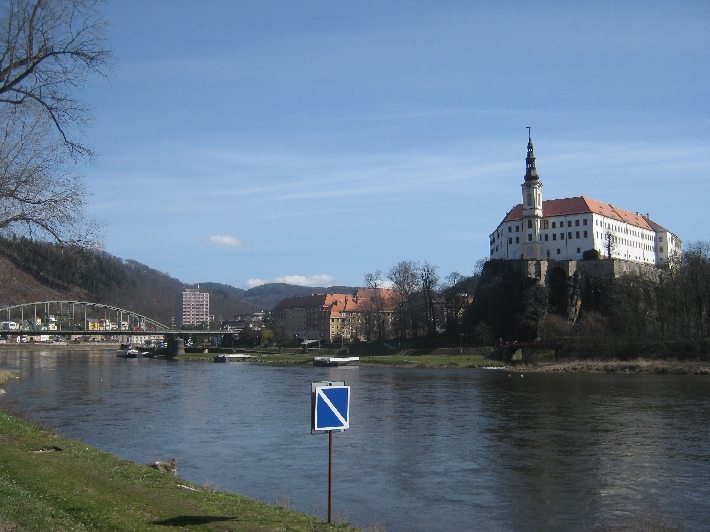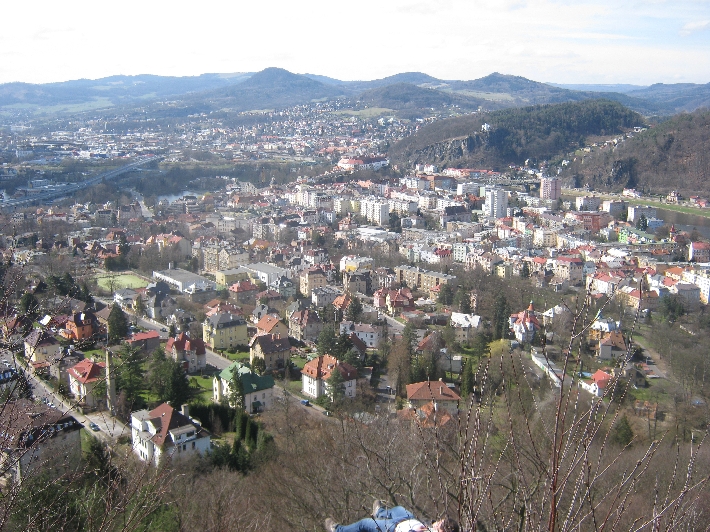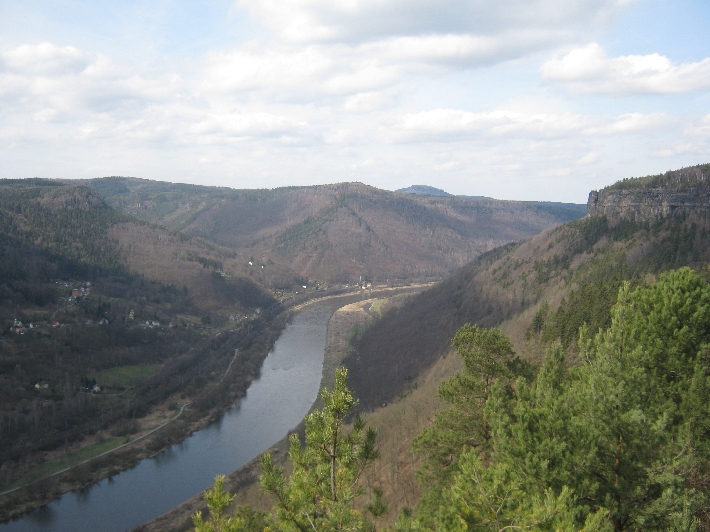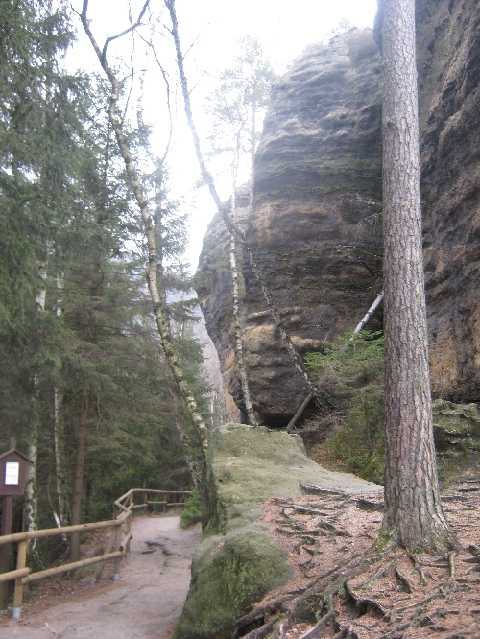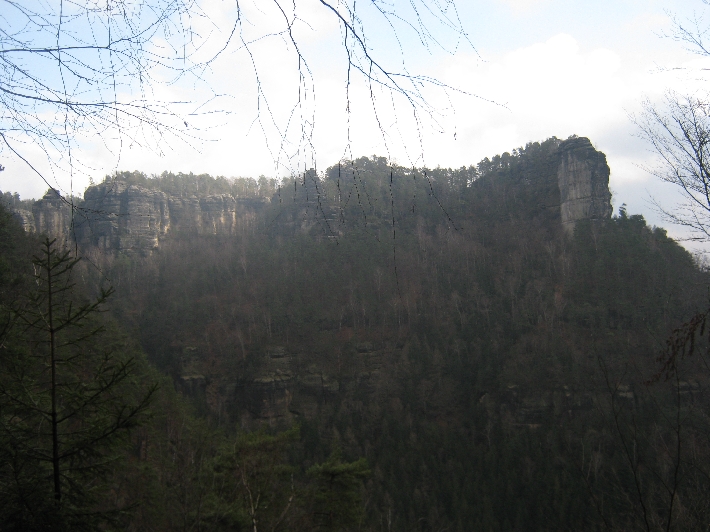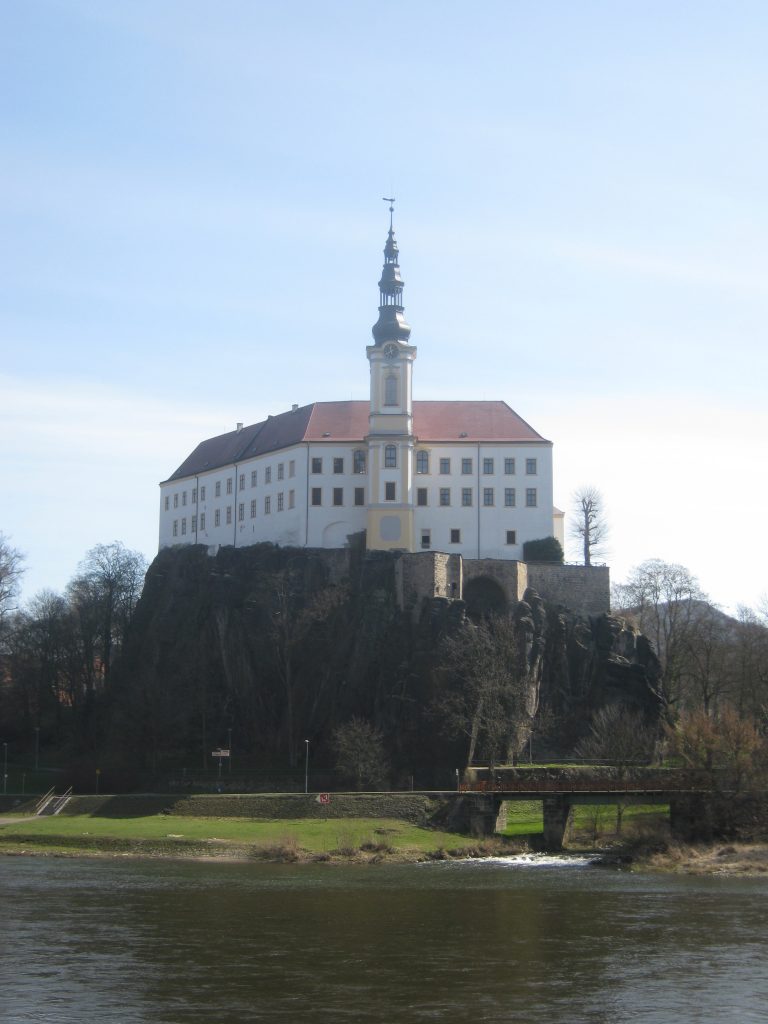
…….Sunday 27th March 2016 was Easter Day. The following day, I put myself on a train from Prague to Decín, intending to spend my post-Easter break, walking for a few days in Ceské Švýcarsko – Bohemian Switzerland, fulfilling the promise I made to myself when I had paid a day visit to the area, some six weeks previously.
Surprisingly at the time, I never wrote about this visit here on my blog. But a combination of the fourth anniversary, together with the need to occupy my evenings whilst currently in lock down because of the corona virus, means I’m doing so now. And whilst I have previously explained here, why I chose to retire and live in North Bohemia, I still regularly am asked why I chose this particular part of North Bohemia in which I now live. This post may help to answer that question.
Around midday on that Easter Monday 2016, I set off from Decín station, first alongside and then over the Labe river, through the town centre, in order to join the red waymarked route and walk to the border village of Hrensko.
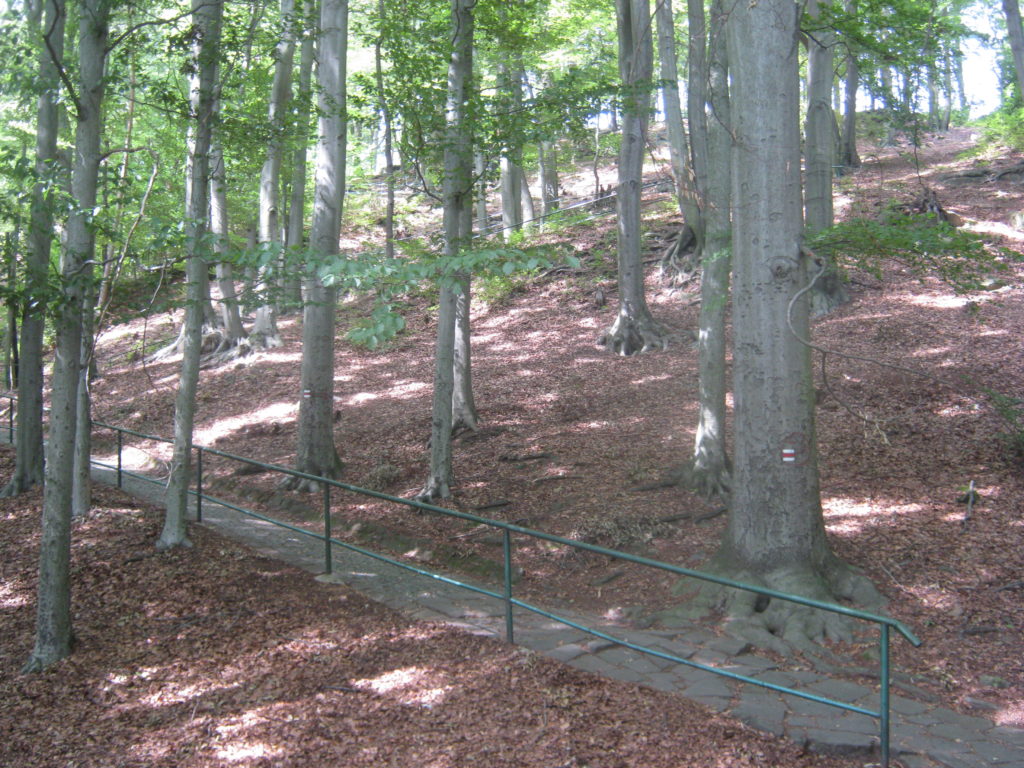
After a steep climb up this zig-zag path, I was rewarded with a splendid view of Decín.

Further on, there were wonderful views of Kanon Labe which I have described and illustrated in this more recent post.
The path then took me for several kilometres through the forest to the village of Labská Strán.
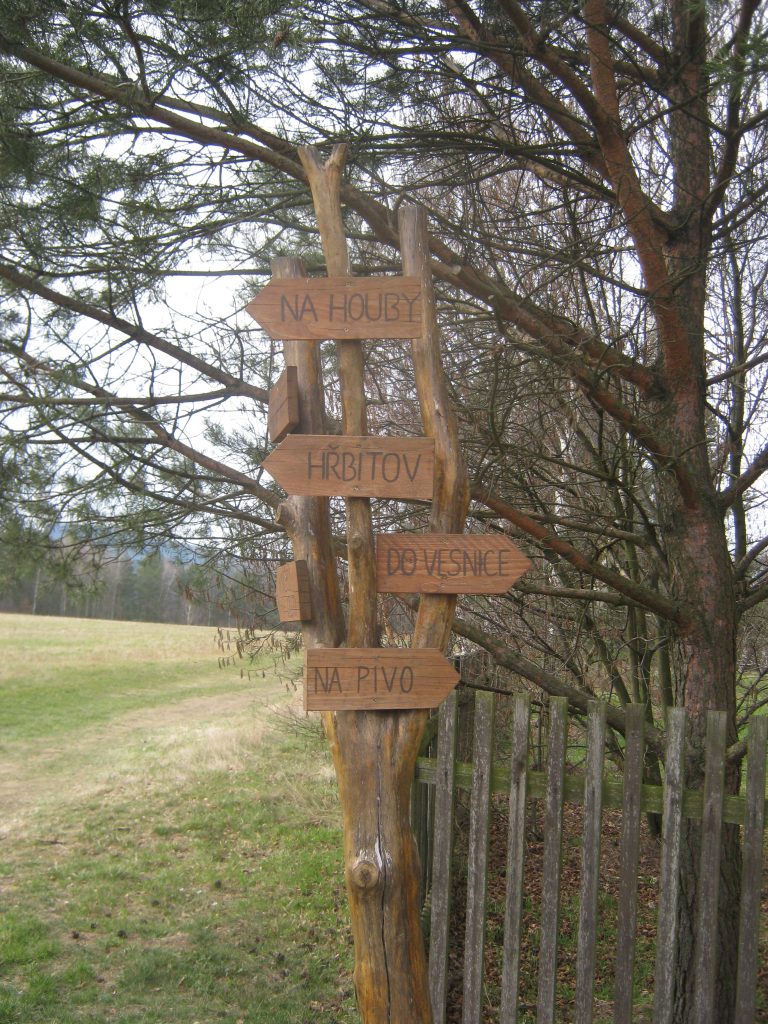
On the outskirts of the village was this delightful sign. To the left you will find the Hrbitov/Cemetery, whilst to the right is the way do vesnice/to the village. But the top fingerpost tells you where to go Na houby/for mushrooms, whilst the bottom fingerpost tells you where to go Na pivo/for a beer 🙂 Only in the Czech Republic!
From Labská Strán, the path descended into, and then along, an almost dry river valley before becoming a narrow pavement alongside the main Decín – Dresden road and the Labe river, for the last 1.5km into Hrensko. Having walked over 20km, I was very pleased to reach Hotel Labe where I had already booked to spend the night.
The next day, I continued along the red waymarked route, repeating the first part of the walk I had undertaken on my day visit, six weeks earlier. This took me up to Pravcická brána…..
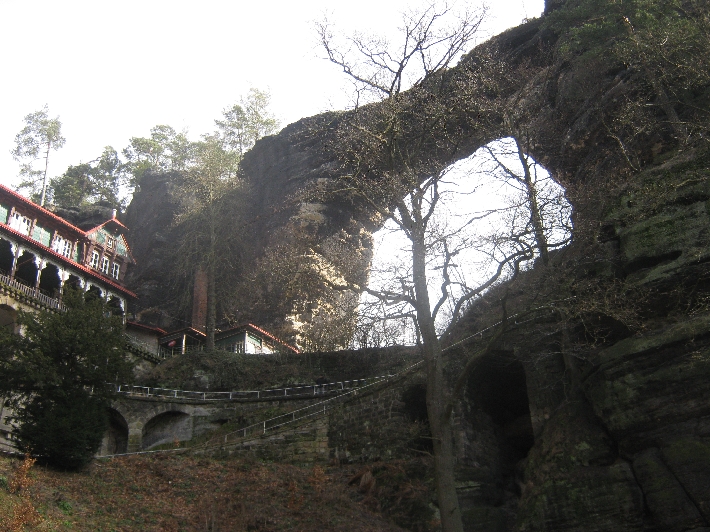
…..and then along under steep cliffs…..

…….to the small village of Mezní Louka. But it was whilst I was on this section of my walk that I had an unfortunate mishap. My old but faithful trekking pole snapped and would no longer support me.
Whilst walking the Chemin de St Jacques, in France, in 2002, I became a convert to walking with a trekking pole. Particularly as I have got older, I don’t feel confident walking on an uneven path, without a trekking pole in hand, to help me keep my balance. This is especially true if I’m also carrying several kilos in a backpack. Therefore I was quite pleased to reach the road at Mezní Louka, without falling over!
I had planned to continue walking along the red waymarked route, to the village of Jetrichovice, where I had already booked ahead to spend the night in Penzion Drevák. But without a functioning trekking pole, I decided that discretion was the better part of valour. Instead, I took a different route, partly consisting of gravelled tracks and the rest along tarmacked roads. Thus I safely walked into Jetrichovice, later that afternoon.
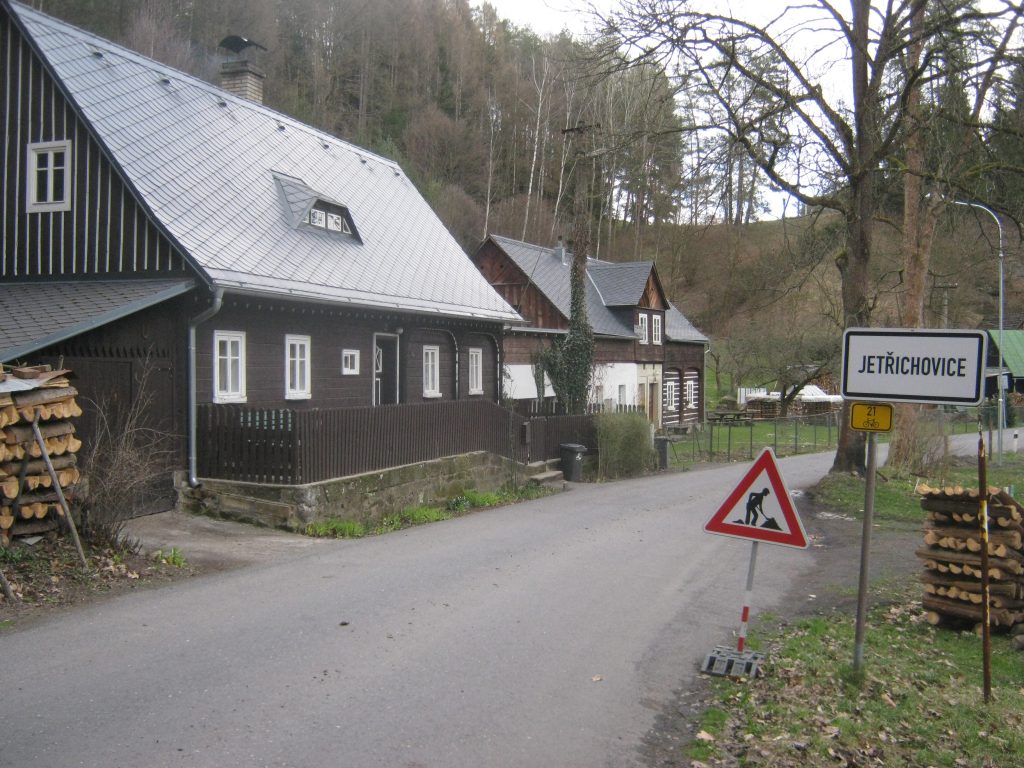
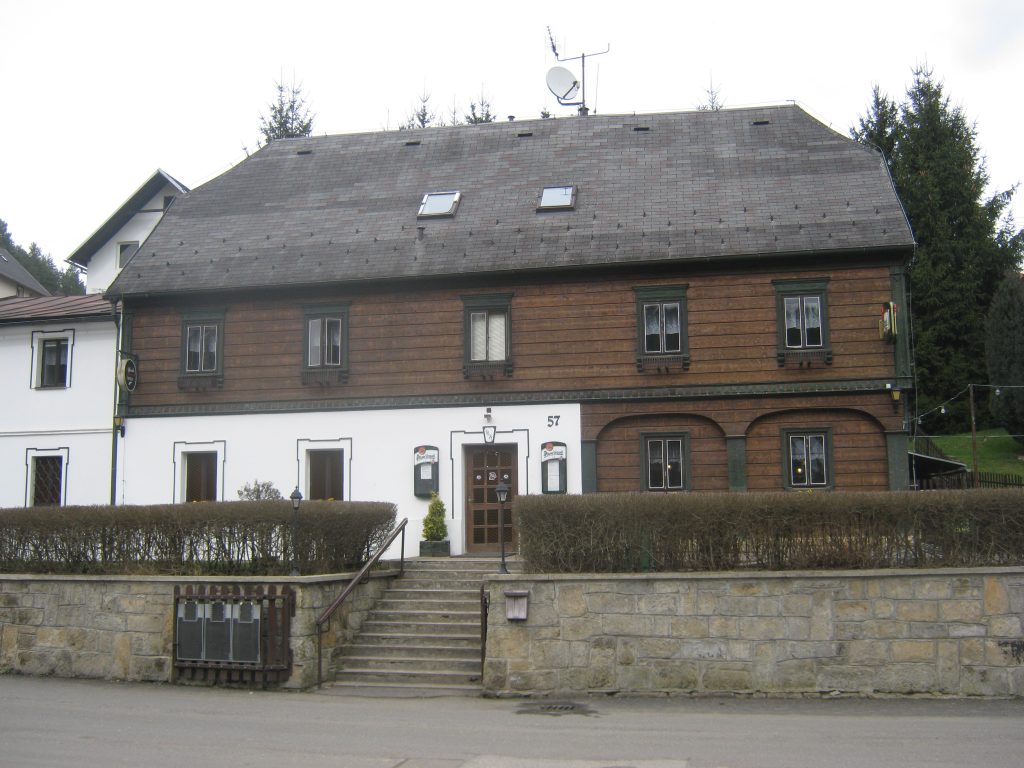
After checking in at Penzion Drevák, I went for a short walk around the village. Within sight of the penzion was a bus stop, on which there was the timetable of bus service 436, into Decín. Believing that a town of 50,000 people, next to a popular walking area, would have a sports shop selling trekking poles, I noted the time of a bus departing mid-morning the next day, and told my hosts at the penzion, I would be staying with them a second night.
The next morning after breakfast, I went to the bus stop in good time and waited. Very close to the designated time, along came the bus. There followed a very scenic bus journey lasting nearly an hour, through a whole series of attractive villages, including one called Stará Oleška 🙂 Yes, that bus journey actually took me past the front door of the house where I now live!
Upon arrival in Decín, I searched the town centre, looking for a sports shop, but couldn’t find one. Eventually I spotted new shopping complex slightly out of the town centre, with a large Kaufland supermarket – the place where I now do nearly all my food shopping. Next to it was, and still is, a large Sportisimo sports shop. Inside, I found a pair of trekking poles for a very reasonable price. Mission accomplished!
After a pub lunch, I caught the early afternoon bus and enjoyed the same scenic journey of a few hours earlier, in the reverse direction, back to Jetrichovice.
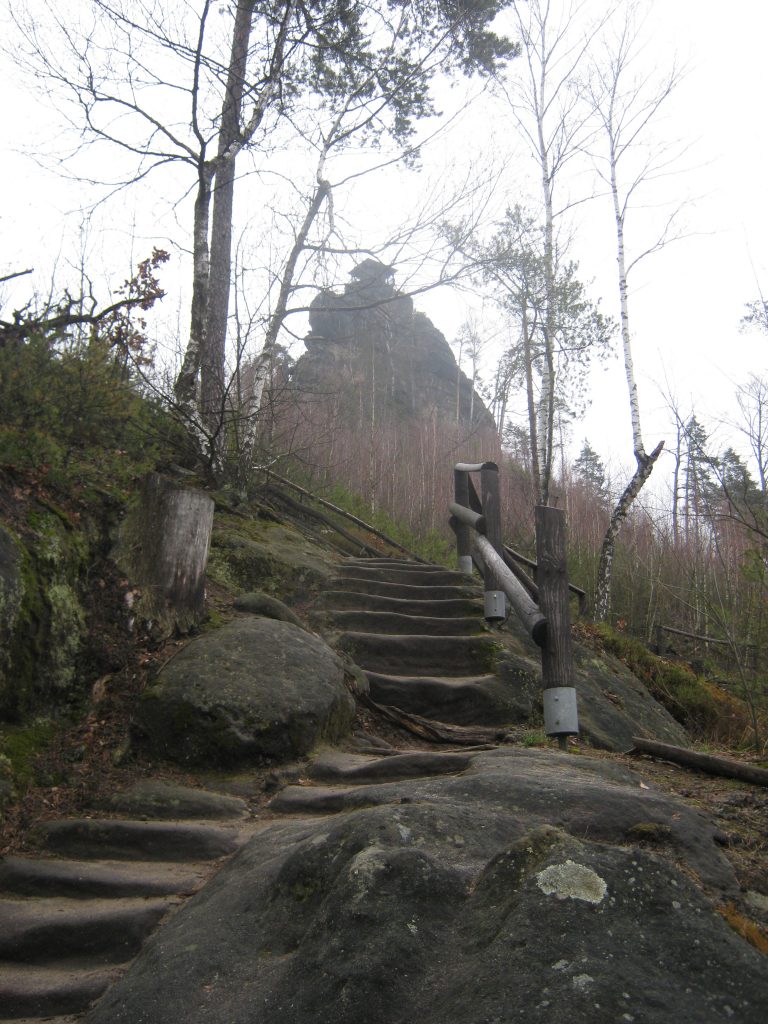
The next day, I did walk part of the red waymarked route I had avoided two days earlier. I climbed from Jetrichovice, up to Mariina skála, from where there are wonderful views over the surrounding area. Very worthwhile, even though it was a bit misty that day.
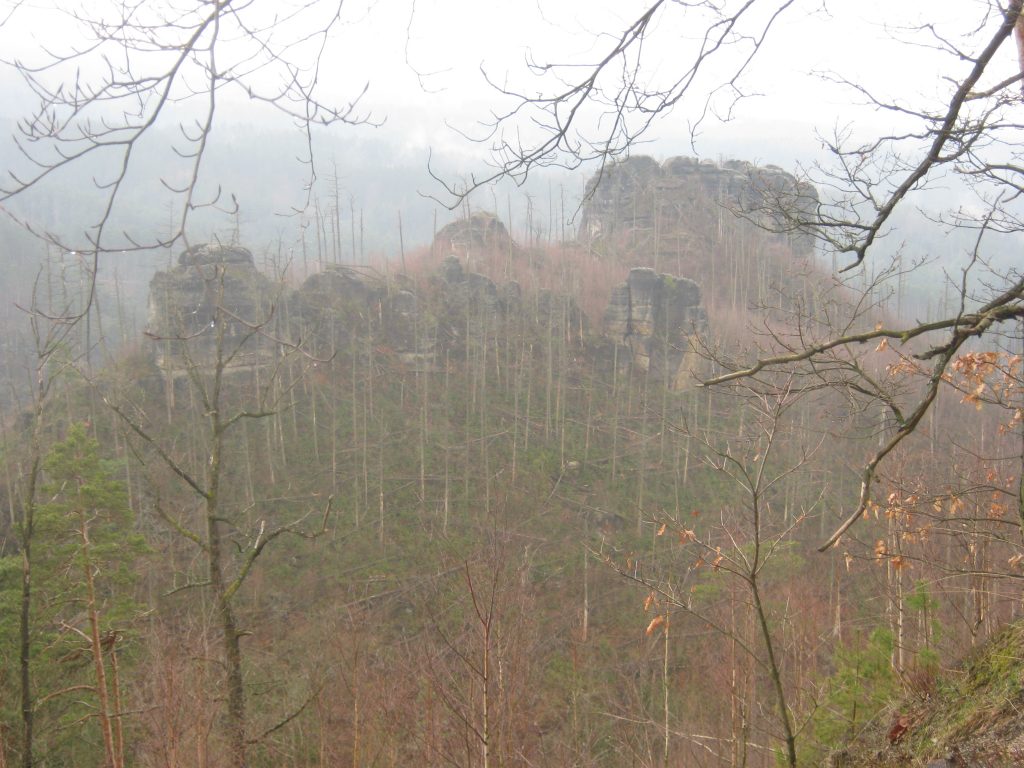
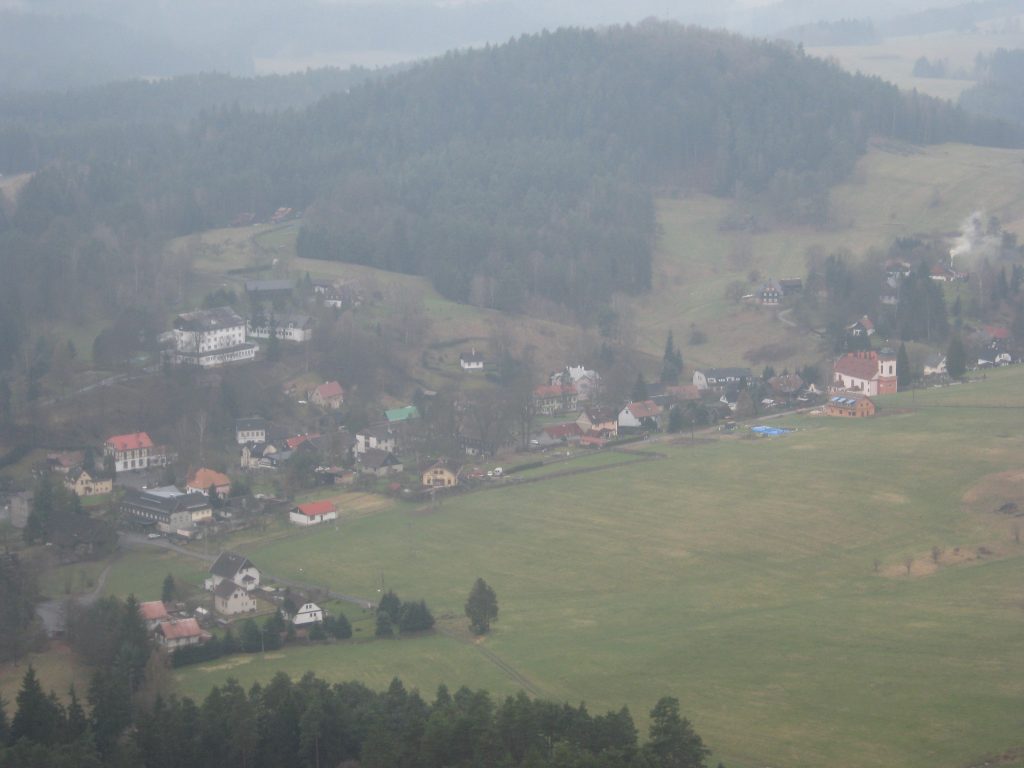
Slightly further on is Balzerovo ležení, an interesting rock formation which has a picnic table beneath it. Please note my shiny new trekking pole propped up against the table 🙂 Then, rather than retracing my steps, I made a circular return to Jetrichovice, via the yellow waymarked route.

On Friday 1st April 2016, I once more caught the 436 bus in Jetrichovice, all the way to Decín railway station for my return journey to Prague. Exploring this specific area on foot and then by bus, left a permanent impression on me. Whilst I never said to myself that I wanted to live in a village on the 436 bus route, when nearly a year later, I saw the house in which I now live, on the Vesta Reality website, I knew immediately where is was. And the rest, as they say, is history!












